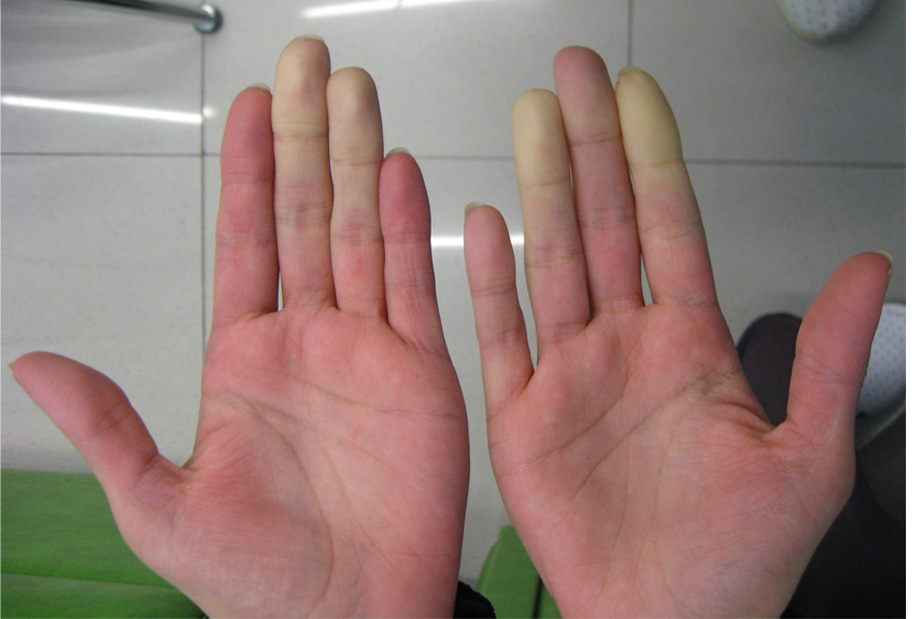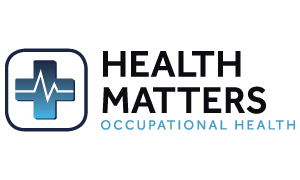
There are two types of conditions commonly associated with vibration exposure.
Hand-Arm Vibration Syndrome (HAVS)
This is the medical term for symptoms caused by vibration damage that can occur in the fingers, hands and arms when working with vibrating tools or machinery. HAVS is divided into three subgroups: neurological disorders, vascular and musculoskeletal.
1. Neurological injuries
Early symptoms are usually tingling and/or numbness in the hands and fingers. After a while, this turns to reduced sensation and dexterity; people often call this ‘sausage fingers’. Fully developed HAVS is irreversible and can cause significant problems with home and work life e.g. dropping things easily or having problems with tasks such as pouring water into a glass or inserting a key into a lock.
2. Vascular Injuries
These affect the small blood vessels in the hand and fingers, causing them to constrict. This causes blanching (whiteness) of the fingers, usually triggered by exposure to cold. This is commonly known as “vibration white finger” (VWF). When blanching happens the person can often experience numbness in the areas that have turned white. When blood flow returns the fingers can look blue and it can be very painful.
3. Musculoskeletal injuries
Musculoskeletal injuries can result in decreased grip, reduced use of the hand and pain in the hand and arm.
It is not clear why this happens but it might be due to damage to nerves and muscles. These types of symptoms are often misdiagnosed by GPs etc. as hospital tests will often show normal results. This is why it is important to have access to an occupational health service.
Carpal Tunnel Syndrome (CTS)
CTS is a set of symptoms thought to be caused by squashing of the median nerve in the carpal tunnel.
In the early stages, CTS causes pins and needles in the fingers except for the little finger. Symptoms most commonly happen at night and can disturb sleep. With time however symptoms may also start happening during the day. In severe cases, the base of the thumb can get very painful and the muscles can begin to waste away. CTS is different than HAVS in that it can be treated with surgery.
Why does it happen?
It is well known that prolonged (i.e several years) exposure to vibration is harmful, and can cause various symptoms. However this doesn’t mean those at the early stages of their career are not at risk as people may have individual factors that increase the likelihood of vibration related injury.
What tools can cause vibration injury?
There are hundreds of different types of hand-held power tools and equipment, which can cause ill health from vibration. Some of the more common ones are:
- Saws
- Hammer drills
- Grinders
- Jigsaws
- Powered sanders
- Polisher
- Power hammers & chisels
- Strimmers/brush cutters
- Demolition hammers
- Scrabblers
- Compressed air hoses
You must provide health surveillance for all your employees who, despite your action to control the risk, are likely to be regularly exposed above the Exposure Action Value or are considered to be at risk for any other reason.
Don’t ignore the signs
- Tingling and numbness in the fingers (which can cause sleep disturbance).
- Not being able to feel things with your fingers.
- Loss of strength in your hands (you may be less able to pick up or hold heavy objects).
- In the cold and wet, the tips of your fingers going white then red/blue and being painful on recovery.
Prevention is better than cure- HAVS is preventable but once the damage is done, it is permanent. Nearly 2 million people are at risk of HAVS, and Health Surveillance is vital to detect and respond to early signs of damage. Contact us now to discuss any Health Surveillance requirements you may have.


